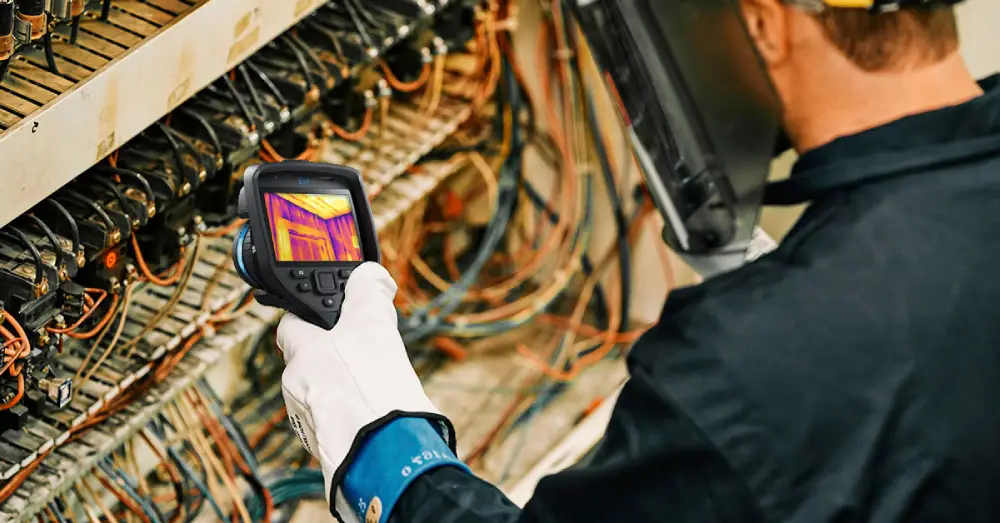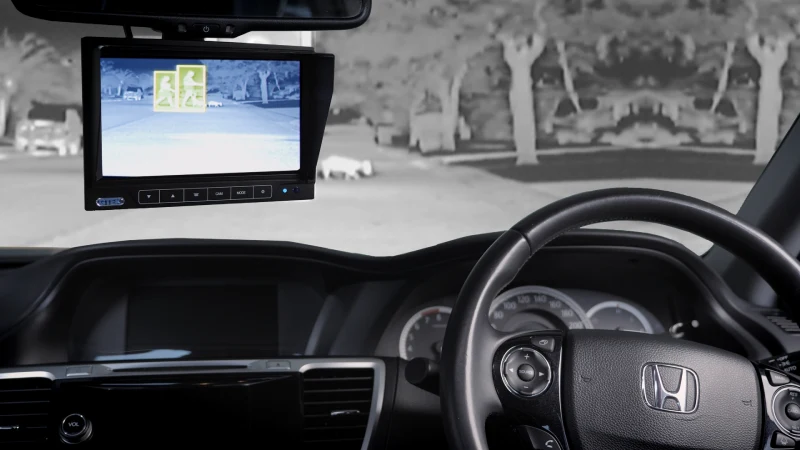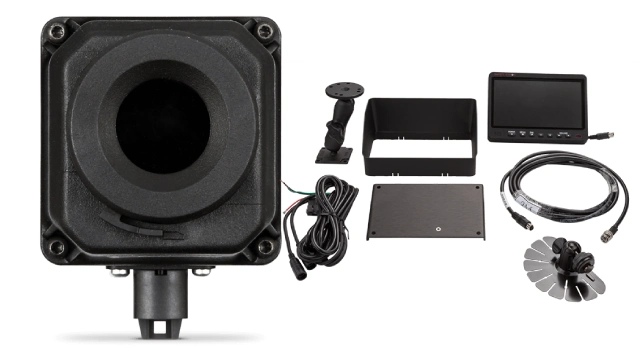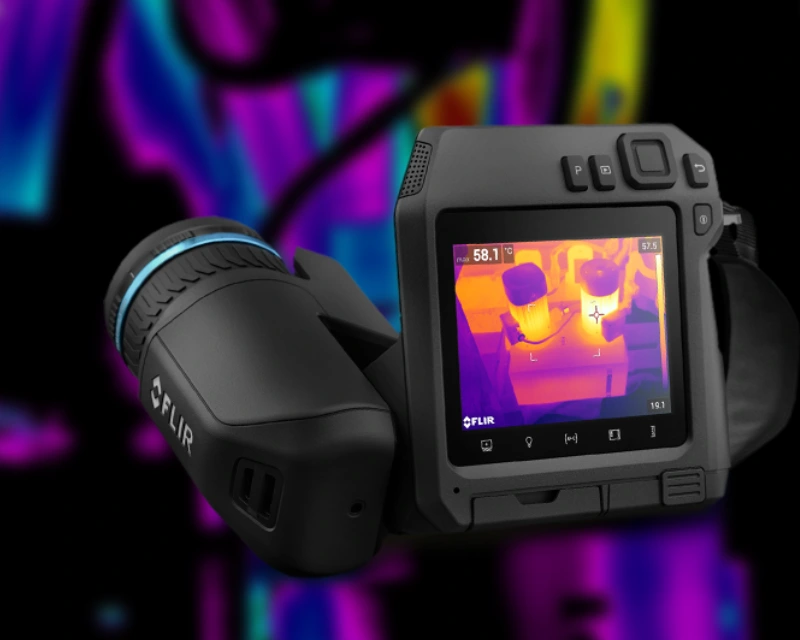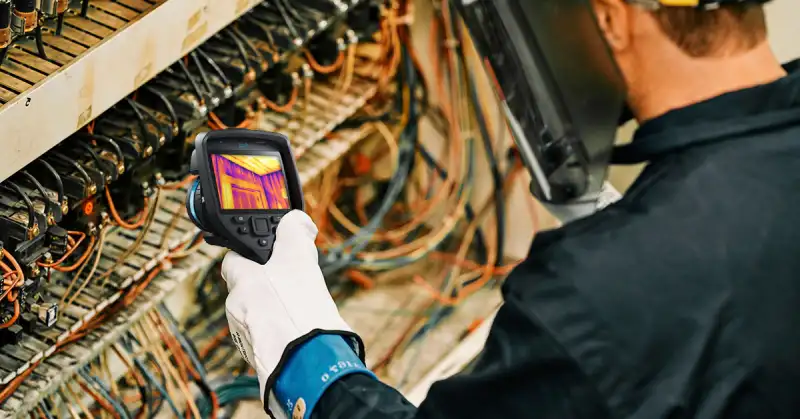Every year more than 5000 Australian children are rescued from cars. Leaving kids alone in a hot car can lead to serious health complications and even death.
The heat from the sun can turn any car into an oven with temperatures often exceeding 70 degrees Celsius.
Chef Matt Moran’s Unconventional Oven
Since 2018 ten Australian children have died in hot cars. According to Kidsafe Australia, half of those deaths occurred in Queensland.
To highlight the dangers of leaving children in hot cars, Kidsafe asked Chef Matt Moran to demonstrate his Unconventional Oven.

In a Kidsafe event at Bondi Beach, Chef Moran used the heat from the sun to cook meat inside a car.
The lamb loin was heated for 1.5 hours with the internal car temperature reaching over 70 degrees Celsius. The intensity of the heat shows the dangers for young children who are left inside hot cars.
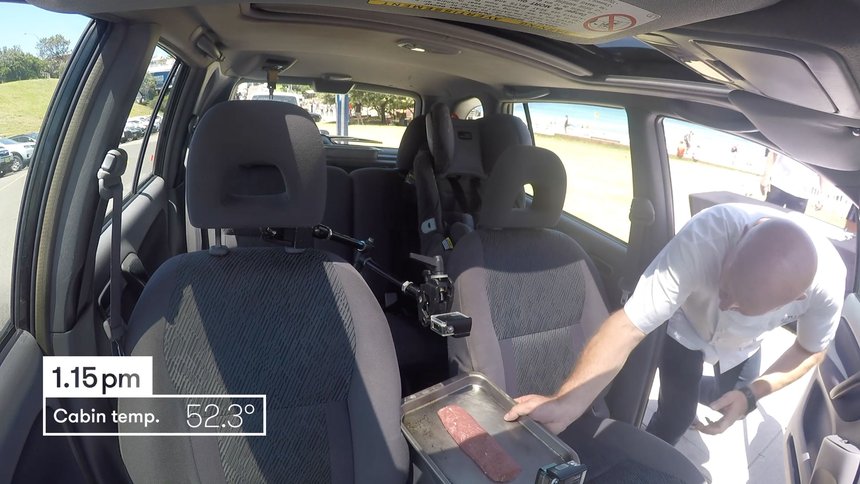
FLIR Thermal Imaging Reveals Dangers in Kidsafe Video
GTEK Infrared was asked by Kidsafe to support this important public announcement. Grant Law from GTEK used a FLIR T640 Thermal Infrared Camera to track the heat spots on the cooking meat, and the rising temperature inside the car.
FLIR thermal cameras are designed to detect infrared radiation, which is emitted by all objects. When a person or object emits more heat than its surroundings, it appears as a bright spot on the thermal image.
The FLIR T865 handheld infrared camera has replaced the T640 and can measure temperatures from -40 to 100°C. GTEK’s thermal images were featured in the Kidsafe video and showed that the temperature inside the vehicle quickly rose above 70°C.
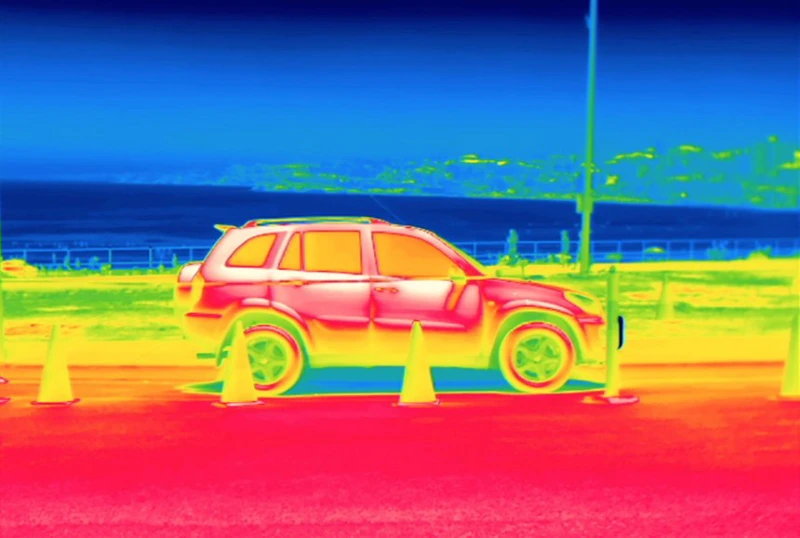
The rapid rise in temperature was because the car was parked in direct sunlight and because the glass in car windows is designed to trap heat inside.
The car’s dark paint colour and dark interior also increased the heat inside the car. Darker coloured cars absorb more radiation than white or lighter coloured cars. Dark cars will therefore heat up faster under bright sunlight.
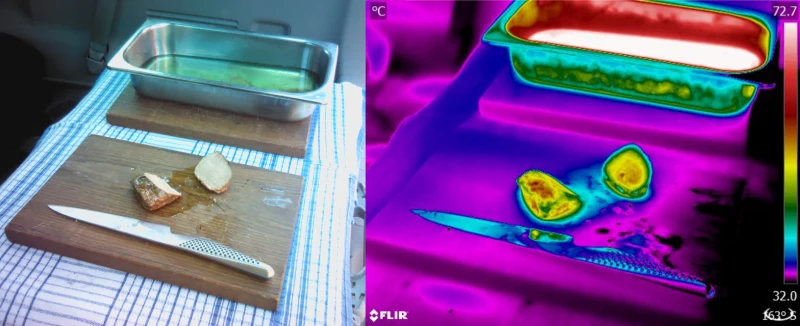
Thermal Cameras Help Police Find Kids Trapped in Hot Cars
While a FLIR thermal camera was used to track hot spots in Kidsafe demonstration, infrared cameras can also be a useful tool for police, fire fighters, and other emergency workers to detect children trapped in hot cars.
When a child is left alone in a car on a warm day, the temperature inside the car can rise rapidly, even if the windows are slightly open. As the temperature inside the car increases, the child’s body temperature also increases.
A thermal camera can show the child’s body temperature and help health workers to determine the severity of the heat impact on the child. Thermal infrared cameras can also highlight the areas of the car that are the hottest, such as the dashboard and car seats.
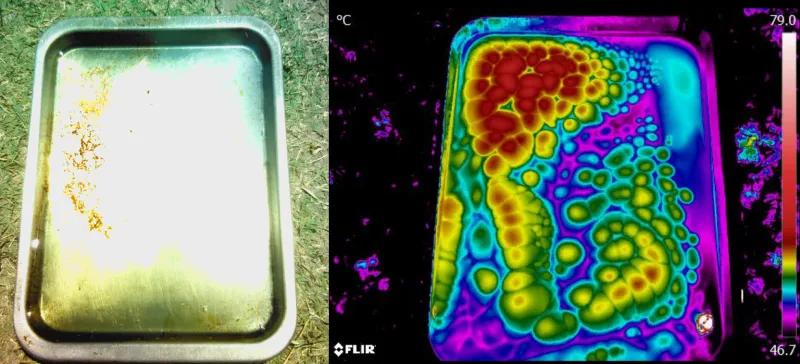
The Sun Turns Any Car Into an Oven
According to Kidsafe Queensland, the temperature inside a parked car can be as much as 30 to 40 degrees higher than the outside temperature. This means that on a 30 degree day, the inside the car could be as high as 70 degrees.
Kidsafe also says that 75% of the temperature rise occurs within five minutes of closing the car and leaving it. 90% of the temperature rise occurs within 15 minutes.
Why is it Bad to Leave Baby in a Hot Car?
Leaving a baby in a hot car is a dangerous situation because they are more vulnerable to heat stroke and dehydration. This is because babies and young children are not able to regulate their body temperature as effectively as adults.
When a baby is left in a hot car, the temperature inside the car can rise quickly, even if the windows are slightly open. The baby’s body temperature can increase rapidly, and their bodies may not be able to cope with the sudden changes in temperature.
If a baby’s body temperature reaches 40°C or higher, they may suffer from heat stress or heat stroke, which can be life-threatening.
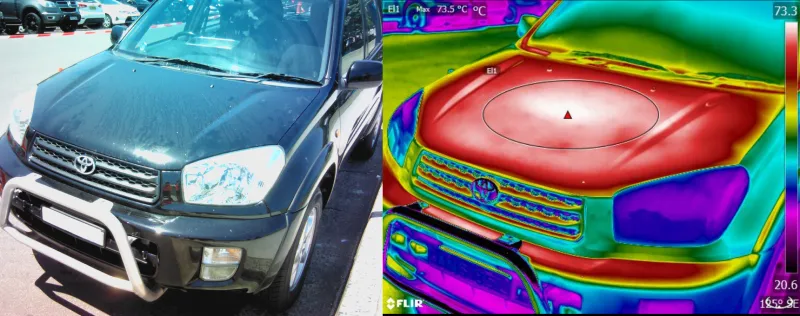
Why Should You Never Leave Baby Unattended in a Car
Leaving babies and children unattended in cars can lead to suffocation where they get tangled up in car seat straps, blankets, or other items.
Unattended children can also accidentally release the parking brake or engage other car controls, leading to the car moving and causing injury. And one of the greatest concerns for parents is the increased chance of abduction.
Leaving a child unattended in a car increases their vulnerability. It only takes a few seconds for someone to open a car door and take a child. Car thieves can also break into a car and not realise that a child is strapped into their seat.
These consequences can all lead to physical injury and psychological trauma. There may also be legal implications for the parents or guardians.
What Does The Law Say About Leaving Kids in Cars?
The laws vary in each state and territory. In Queensland, Section 364a of the Criminal Code lists tough penalties for parents or carers who leave a child under 12 unattended.
The maximum penalty for leaving an unsupervised child for an unreasonable time is three years imprisonment, depending on the circumstances.
Hot Car Deaths in the United States
Baby and toddler heat stroke deaths are not isolated to Australia. According to the US based National Safety Council, 37 children under the age of 15 die each year in the US from heatstroke after being left in a vehicle.
These numbers highlight the severity of the issue and the urgent need for parents and caregivers to take steps to prevent these tragedies from happening.
What is Forgotten Baby Syndrome?
So why do kids get left in hot cars? Sometimes it’s because busy parents and carers get distracted.
Forgotten Baby Syndrome, also known as Fatal Distraction, is a situation where a parent or guardian experiences a temporary memory failure, causing them to unknowingly leave a child in a car.
This phenomenon occurs when a parent or caregiver becomes distracted or forgetful, leading them to inadvertently leave their child behind in a vehicle, even though they may have no intention of doing so.
Memory failures can happen to anyone, regardless of age, race, or socio-economic status, and can have devastating consequences.
Hot Car Safety Tips To Keep Babies and Kids Safe
When a child is left in a hot car, even for a short period of time, the temperature inside the vehicle can quickly rise, leading to heatstroke.
It is important for parents and caregivers to take proactive measures to prevent this from happening, including always double-checking the back seat of the car before locking it, using reminders such as leaving a purse or briefcase in the back seat, and keeping car keys out of reach of children.
By increasing awareness of Forgotten Baby Syndrome and taking proactive steps to prevent it, we can help prevent tragic accidents and keep our children safe.
What Are Heatstroke Symptoms?
If a child has been in a hot car and is displaying heat stroke symptoms, the Queensland Government recommends parents or carers call triple zero (000) and ask for an ambulance.
According to the Queensland Health, heat stroke symptoms can include:
- Lack of coordination
- Dizziness and confusion
- Dry, swollen tongue
- Fast, shallow breathing
- Hot, dry, and possibly red skin
- Intense thirst
- Nausea, vomiting or headache
- Loss of consciousness
- Problems concentrating
- Quick rise in body temperature
- Rapid or weak pulse
- Slurred speech or trouble speaking
- Strange or aggressive behaviour
What Are Heat Stress Symptoms?
Queensland Health advises that heat stress can include:
- Dry eyes and mouth
- Headache
- No tears when children are crying
- Rising body temperature
- Shortness of breath
- Vomiting or nausea
What is the Treatment of Heat Stress?
Immediate action to cool down the child should include:
- Apply cool wet towels to the body
- Cool body with a bath or shower
- Drink water or suck on ice
- Rest in a shady, cool place
If symptoms persist seek medical attention.
How Long Can a Dog Sit in a Hot Car?
It is essential for parents and caregivers to take precautions to ensure that children are never left alone in a car, even for a few minutes.
According to the RSPCA, pets are equally susceptible to dehydration, heat exhaustion, and heat stroke and should not be left in hot cars. In Australia, heat stroke in dogs is most commonly caused by leaving the animals locked in a car.
How to Keep Your Child Safe
In summary, temperatures inside a car can turn into an oven, even on a cooler day.
To keep your loved ones safe:
- Never leaving children unattended while running errands or going into a shop
- Always checking the back seat of the car before locking it
- Keep the car keys out of reach of children
By following these simple steps, we can help prevent tragic accidents.
Further Information on Thermal Infrared Cameras
To learn more about FLIR thermal cameras call GTEK Infrared on 1300 416 626.
You can also book in for Thermography Training, see GTEK’s Thermal Camera Solutions for building, electrical, and mechanical inspections, or check out our full IR Camera Range.

